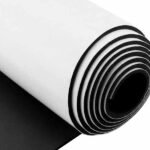A shorty wetsuit, also known as a spring suit, is a versatile piece of equipment that is widely used for water sports and activities. It offers a great balance between flexibility, comfort, and thermal protection, especially in warm water conditions. Whether you’re surfing, diving, or snorkeling, knowing when and why to wear a shorty wetsuit can help you enjoy your water sports to the fullest. In this article, we’ll explore the benefits of shorty wetsuits, how they compare to full wetsuits, and when they are the best option for various activities.
Shorty wetsuits are designed to provide warmth and protection while offering maximum flexibility for activities in warmer water. Their unique design covers the torso and sometimes the thighs, while leaving the arms and legs exposed for increased movement and comfort.
Now that we know what a shorty wetsuit is, let’s dive into the key advantages of wearing one and when it’s most appropriate to use.
What is a Shorty Wetsuit?
A shorty wetsuit is a type of wetsuit designed with short sleeves and legs, typically covering the torso and providing a snug fit for a wide range of water activities. Unlike full-length wetsuits, which cover the arms and legs entirely, shorty wetsuits offer more freedom of movement and are ideal for warmer water temperatures.
Shorty wetsuits are made from the same material as full wetsuits—neoprene but with less coverage. They usually range in thickness from 2mm to 3mm, which is sufficient for protection against the elements in milder conditions.
The main advantage of a shorty wetsuit is its ability to provide thermal insulation while leaving the arms and legs exposed, making it easier to move freely in the water. They are typically worn in water temperatures between 60°F and 75°F (15°C to 24°C), offering the right balance of warmth without causing overheating.
What Are the Benefits of Wearing a Shorty Wetsuit?
Shorty wetsuits come with several benefits that make them a popular choice among water sports enthusiasts. From increased flexibility to thermal protection, they offer a unique combination of advantages that allow for comfort and performance in warmer water conditions.
Shorty wetsuits are lighter and more flexible than full wetsuits, providing greater comfort and freedom of movement. They offer thermal protection for the core, reducing the risk of hypothermia in mild water temperatures, while leaving the limbs free for greater agility.
- Increased Flexibility: Shorty wetsuits are perfect for activities that require full movement of the arms and legs, like surfing, snorkeling, and paddleboarding.
- Lightweight Design: The reduced coverage makes shorty wetsuits lighter, which is ideal for active water sports where mobility and quick reactions are crucial.
- Thermal Protection: While they are not as warm as full wetsuits, shorty wetsuits offer enough insulation to keep your core warm without overheating your body in moderate water temperatures.
- Sun Protection: The coverage over the torso provides some protection against the sun’s harmful rays, which is an added benefit during long hours in the water.
When to Use a Shorty Wetsuit?
A shorty wetsuit is best used in conditions where water temperatures are warm enough to avoid the need for full thermal protection, but still require some insulation for comfort. They are ideal for many water activities but are not suitable for extremely cold water or long durations in chilly conditions.
Shorty wetsuits are typically used in water temperatures ranging from 60°F to 75°F (15°C to 24°C). They are perfect for sports like surfing, snorkeling, and kayaking, where mobility is as important as warmth.
- Surfing: A shorty wetsuit provides the warmth and protection needed during a surfing session without restricting the movement necessary for paddling and riding waves.
- Snorkeling and Diving: For shallow water diving or snorkeling in warm climates, shorty wetsuits offer just the right level of thermal protection.
- Paddleboarding: Whether you’re paddling in calm waters or riding some waves, shorty wetsuits allow for full mobility of the arms and legs while keeping you insulated from the cool water.
- Tropical or Temperate Regions: If you’re in tropical or temperate regions, a shorty wetsuit is the perfect option to provide warmth without causing you to overheat.
Should I Get a Short or Long Wetsuit?
Choosing between a short wetsuit and a full wetsuit depends primarily on the water conditions you will encounter and the level of protection you need. While a full wetsuit covers the entire body and provides more thermal insulation, a short wetsuit offers greater flexibility and comfort in milder conditions.
If you’re primarily engaging in water activities in warm weather, a short wetsuit is likely your best option. However, if you’re heading into colder waters, you’ll want to consider a long wetsuit for maximum warmth and insulation.
- Short Wetsuit: Best for warm to temperate water conditions (60°F to 75°F), providing flexibility and comfort without the added bulk.
- Full Wetsuit: Necessary for colder water conditions (below 60°F), as it provides more coverage and better thermal protection for your whole body.
- Consider Your Activity: For water sports requiring movement, such as surfing or kayaking, short wetsuits may be the better choice. For diving or extended stays in cold water, full wetsuits are recommended.
What Temperature is a 2mm Shorty Wetsuit?
A 2mm shorty wetsuit offers a light level of thermal insulation, making it ideal for warmer water temperatures. The thickness of the wetsuit plays a significant role in determining its suitability for various activities and conditions.
A 2mm shorty wetsuit is best used in water temperatures around 60°F to 70°F (15°C to 21°C), where the insulation provided is enough to keep your core warm without overheating.
- Ideal Water Temperature: A 2mm shorty wetsuit is perfect for activities in water temperatures ranging from 60°F to 70°F, providing enough warmth for short exposure without causing discomfort.
- Warm-Weather Activities: In these temperatures, the 2mm thickness offers adequate insulation for water activities such as surfing, snorkeling, and paddleboarding, where flexibility is more important than extreme warmth.
- Extended Use: For longer exposure in cooler waters, you may want to opt for a thicker wetsuit, such as a 3mm or 4mm, to ensure adequate protection from the cold.
Conclusion
In conclusion, shorty wetsuits are an excellent option for water sports and outdoor activities in warmer water conditions, providing the right balance between thermal protection and flexibility. Whether you’re surfing, paddleboarding, or snorkeling, a shorty wetsuit offers mobility and comfort while keeping you warm enough to enjoy your activity. However, for colder water conditions or extended stays in the water, you might consider a full wetsuit for maximum warmth and coverage.
If you’re considering adding custom neoprene shorty wetsuits to your product line or retail offering, our team can help. With years of manufacturing experience, we offer high-quality, customizable wetsuits tailored to your specific needs. Contact us today to inquire about our products and start your partnership with us!











